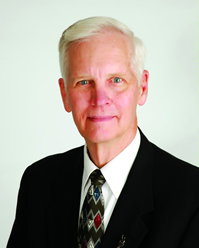The rapidly and constantly advancing field of rheumatology sees significant scientific breakthroughs being translated into clinical use every year.
Basic science discoveries that made headlines last year have advanced toward clinical trials, and clinical introductions from 2014 have become part of the standard armamentarium. The Year in Review, which takes place from 7:30 – 8:30 am Sunday, opens this year’s Annual Meeting with reviews of the newest and most important developments in basic science and clinical advances.

“A lot of what is presented at Annual Meeting is pharmacologic studies and reviews of basic and clinical science developments,” said Anne Davidson, MBBS, Professor of Molecular Medicine at Hofstra North-Shore LIJ School of Medicine. “But those areas all follow behind the new scientific discoveries. For anyone who wants to know what is coming in the next few years, this session provides a concentrated introduction to what is new and what could be important in the continuing advancement of rheumatology.”
Dr. Davidson will focus on four broad developments in basic rheumatologic science. The biggest change in the past year was the broad shift to Big Science.
“Big Science is research that generates huge datasets that are simply too big, too complex to understand using our traditional analytical tools,” she explained. “Big Science is nontraditional, starting with datasets bigger than most of us have ever been able to collect, much less work with. Big Science requires large teams of nontraditional collaborators. We are finding ourselves working with engineers, bioinstrumentation, and software designers — specialists we have not interacted with a tremendous amount in the past. That is in addition to the usual clinicians, technicians, and laboratory people that we are used to collaborating with.”
Big Science, sometimes called Big Data in other fields, produces big results. The pharmaceutical industry has moved quickly to combine clinical and genetic research to uncover and elucidate novel biologic pathways. One of the first successes in rheumatologic disease is an anti-sclerostin antibody. Genome-wide association analysis of thousands of patients with osteoporosis, together with the identification of rare single-gene defects that cause very dense bones, revealed a novel pathway, a novel therapeutic target, and led to the development of several novel drug candidates.
Another key development is the growing recognition of the role metabolism plays in immune function. The contribution of cell metabolism to immune function is one of the hottest areas in immunology, Dr. Davidson said. That includes seminal publications in rheumatology.
Two other areas to watch are innate lymphoid cells (ILCs) and the interaction of the nervous system and the immune system. ILCs are immune cells that belong to the lymphoid lineage but do not express antigen-specific receptors. This novel lineage plays emerging roles in the regulation of tissue homeostasis in infection, chronic inflammation, metabolic disease, and cancer. And there is growing evidence for direct neurologic control of some aspects of immune functioning.
Some of the basic science breakthroughs highlighted in past sessions now move onto the clinical stage. One of the most important trends is clinical tools that can help identify rheumatoid arthritis patients who can reduce or even stop biologic agent use without negative effects.

“Being able to stop or decrease biologic medications lessens the cost to the patient and to the health care system,” said Sterling West, MD, Professor of Medicine at the University of Colorado School of Medicine. “There have been some important publications that can help us all work with our rheumatoid arthritis patients. There are also new prognostic markers that can help us identify which patients are more likely to respond to which medications.”
Another important change is the pending acceptance of new treatments for osteoporosis. Two new medications are on the approval horizon, a parathyroid hormone-related peptide known as abaloparatide, and an anti-sclerostin biologic, romosozumab. In addition, the newly approved agent for psoriasis, apremilast, shows promise in treating the mucosal ulcers associated with Behçet’s, and rituximab is being used in a novel therapeutic strategy to help maintain remission for patients with granulomatous polyangiitis.
“There are numerous biologics in development for multiple rheumatologic diseases that are of interest, but many are still three and four years out,” Dr. West said. “During this session, I plan to discuss new diagnostic and prognostic tools and treatment strategies that can be used in the clinic now as well as touch on some developments that might come out in the future.”
